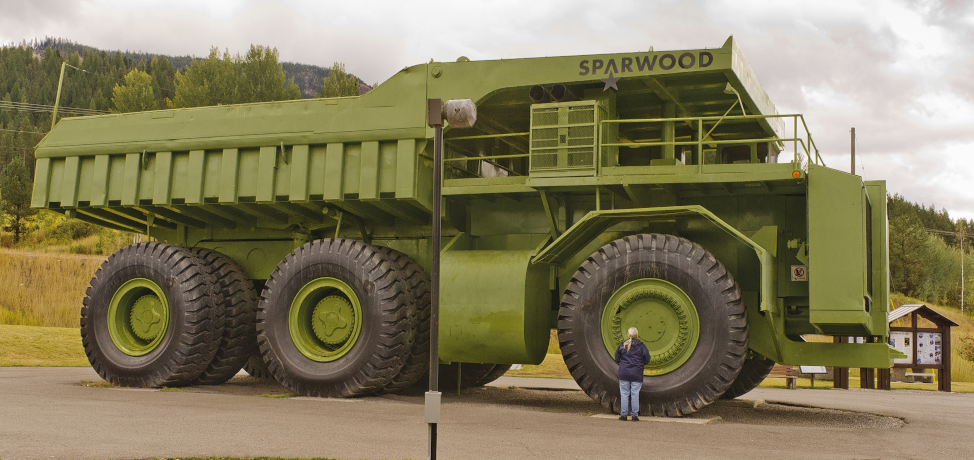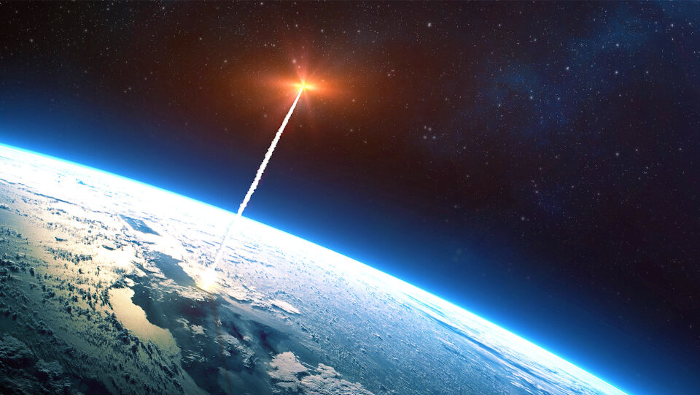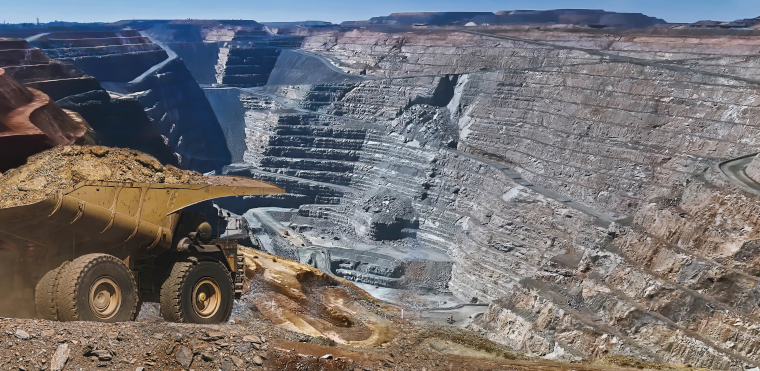
The Abyss Below: Exploring the World’s Biggest Man-Made Holes
In the vast tapestry of our planet’s landscape, there exist scars – colossal voids carved into the Earth’s surface by human ambition and greed. These man-made holes, often hailed as marvels of engineering, have put the earth and mankind in danger. They have ripped irreparable chasms into the ground and the ramifications will likely be felt for generations if we survive that long. The man-made holes have put the environment in peril by challenging the delicate balance of Earth’s ecosystems and altering its very climate.
From sprawling mines to massive excavations, these holes signify not just our thirst for resources but also the profound consequences of our actions against Mother Nature.
Unearthing Earth's Secrets: Mining and Its Environmental Toll
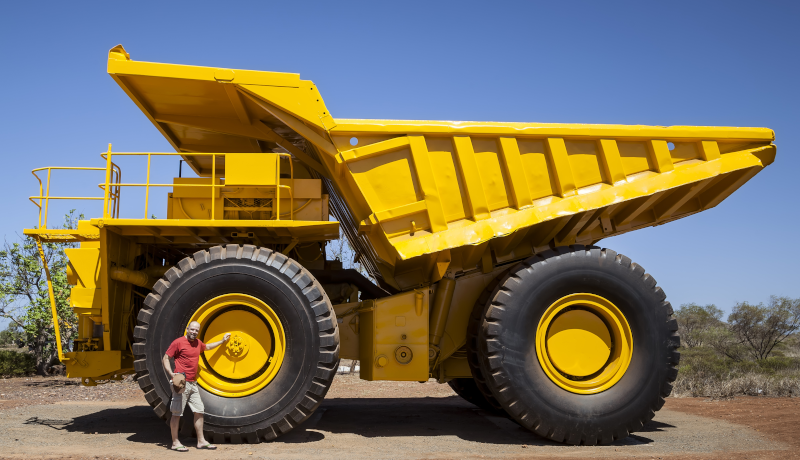
Mining is the unadulterated pursuit of the Earth’s hidden treasures. The very act of mining has given rise to enormous excavations around the world. Yet, these excavations come at a staggering cost to the earth and humankind. Deforestation, habitat destruction, and water pollution are but a few of the environmental sins caused by mining. The insatiable hunger for minerals drives a relentless quest, often disregarding the natural habitats and delicate ecosystems that are irrevocably altered. Many of the large manmade holes listed below will take generations to heal, unless we kill our life giving planet prior. Where do you think that leaves us?
Diamonds: A Glittering Tragedy Beneath the Earth
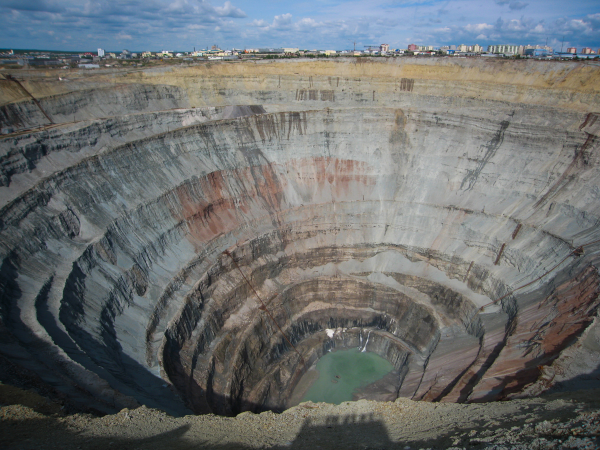
Beneath the Earth’s surface lies a hidden world of dazzling allure and heartbreaking consequences: diamond mines. These mines, often associated with romance and luxury, have a dark underbelly. For every glittering gem that adorns an engagement/wedding ring or necklace, there exists a trail of environmental devastation and human suffering. Terms have arisen like ‘blood diamonds’ which denote the toll the quest for the gems has taken.
Diamond mining, especially in open-pit and alluvial mines, scars the Earth’s surface. The mining action strips away all vegetation and alters landscapes irreversibly. The extraction process involves massive machinery, dynamite, deforestation, and the disruption of natural waterways. The result? Ecological imbalances echo far beyond the mining site, impacting local flora, fauna, wildlife, and nearby communities.
Beyond the environmental impact, diamond mines have long been associated with human rights abuses. In many regions, workers, including children, work in hazardous conditions as slave laborers, often for pennies a day. Conflicts over diamond-rich territories have fueled wars, leading to immense suffering in impacted communities.
Recognizing the need for change, efforts have been made to promote ethical diamond mining practices. Initiatives like the Kimberley Process Certification Scheme focus on slowing the trade in conflict diamonds, ensuring that revenues from diamond mining benefit local communities rather than fuel violence.
Ethical and sustainable mining practices, including community engagement and environmental conservation, are slowly reshaping the diamond industry’s landscape. However, change is slow, and will not undo the massive holes blown in the earth.
Despite progress, challenges continue as the consumer’s lust for the shiny gems continues. Do people ever consider that their fancy engagement rings may be ringing in the future with no children at all?
The Jwaneng pit diamond mine in Botswana is currently at a depth of 400m. Another growing diamond mine is the Udachny diamond mine in Russia which is currently at a depth of 110m but is forecast to reach 200m. The Nyurba mine in Russia reaches 345m but is forecast to reach a depth of 750m.
Mercury Mining: A Toxic Legacy Poisoning Our Planet

Mercury has a long history of being mined from the Earth for various purposes, primarily for use in gold mining. However, this seemingly invaluable resource comes at a staggering cost to both the environment and human health.
The mining of mercury does not typically cause large initial chasms in the earth like open-pit mining practices. Instead, mercury is typically found in cinnabar deposits, and the mining process involves digging a wide and intricate variety of tunnels or shafts deep underground to access these deposits.
While the mining activities may create underground voids, they do not result in large open pits or craters on the Earth’s surface as seen in open-pit mining for minerals like gold, copper, phosphate, or diamonds. However, the tunnels and shafts cause widespread instability which often caves inward creating dangerous chasms.
Mercury mining and its subsequent use in artisanal and small-scale gold mining (ASGM) have left a trail of environmental destruction. When mercury combines with gold, it forms an amalgam, allowing miners to easily see and extract gold particles. However, this process releases mercury vapors into the atmosphere and contaminates soil and water sources.
Once in aquatic ecosystems, mercury transforms into methylmercury, a highly toxic form that bioaccumulates in fish and enters the food chain, posing significant risks to both wildlife and humans. Eat the fish in the Great Lakes at your own risk, especially the salmon.
Communities of people residing near mercury mining sites face an abundance of severe health risks. Inhalation of mercury vapors or consumption of contaminated fish can lead to mercury poisoning, causing neurological disorders, developmental issues in children, and even death. Miners themselves, often lacking proper protective equipment and awareness, are at the forefront of these health hazards. A large number of mercury miners end up suffering from mercury poisoning from prolonged exposure.
Recognizing the urgent need to address mercury pollution, international agreements like the Minamata Convention on Mercury have been established. These agreements aim to reduce mercury use, promote safer mining practices, and mitigate environmental and health risks associated with its extraction.
Initiatives advocating for mercury-free alternatives in gold extraction techniques, along with education and awareness campaigns, are crucial to encourage communities to shift away from hazardous practices.
As consumers, supporting ethically sourced gold and raising awareness about the devastating consequences of mercury mining can drive change. By choosing jewelry and products made from responsibly sourced materials, individuals can contribute to the preservation of both human lives and our planet’s fragile ecosystems.
Copper Mining: Digging into the Earth
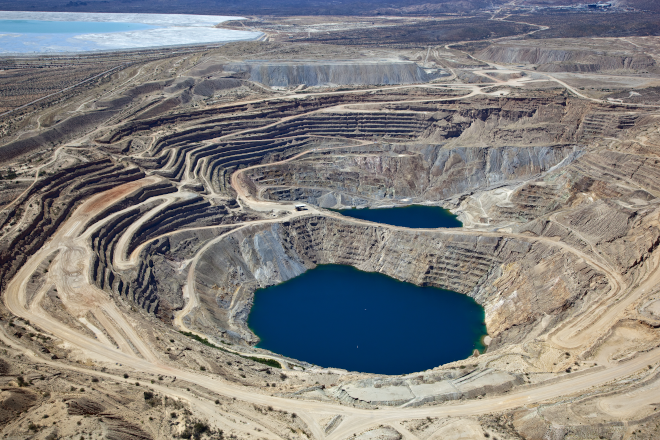
Copper mining employs open-pit methods, resulting in enormous craters, scarred landscapes, and widespread damaged ecosystems. These pits can be vast, stretching for miles, cratering down hundreds of feet, and drastically altering the natural terrain forever.
To access copper deposits, vast forested areas are cleared. This deforestation disrupts delicate ecosystems, endangers wildlife, and contributes to climate change by reducing carbon-absorbing trees. The excavation process alters the soil composition, making it less fertile. This degradation affects agricultural activities, reducing crop yields and threatening food security.
Copper mining can contaminate all nearby water sources with toxic chemicals, leading to acid mine drainage. This acidic water not only harms aquatic life but also seeps into the soil, impacting plants and animals in the surrounding areas.
Mining operations generate significant dust and emissions, polluting the air. Particulate matter and greenhouse gases released during the mining process contribute to respiratory diseases and global climate change.
Copper mining produces vast amounts of waste, including toxic tailings—fine-grained residues containing hazardous materials. If not effectively managed, these tailings leach into the environment, contaminating water sources and soil.
Sadly, as the world shifts toward renewable energy and electric vehicles, copper demand is escalating around the world. How many mile wide & mile deep holes can be blown in the Earth before it collapses? The Chuquicamata in Chili is one of the world’s largest copper mines at a depth of 900m and measures 4.3 km long and 3 km wide.
Gold Mining: Unearthing Riches While Destroying Ecosystems

The lust for gold has existed for centuries. The lucrative industry has caused vast man-made holes blown throughout the Earth’s surface on every continent. Particularly concerning is the practice of open-pit mining, where massive craters are blasted and excavated with extremely large amounts of dynamite and other explosives. This has drastically altered natural terrains and disrupted or destroyed fragile ecosystems including rainforests & estuaries.
Open-pit gold mining often occurs in biodiverse regions, such as rainforests. Bulldozers and explosives are used to clear large areas of vegetation, leading to extensive deforestation and habitat loss. This destruction displaces countless plant and animal species, pushing them closer to extinction. Coincidently, this may be pushing people closer to extinction at the same time.
The process of gold extraction involves the use of cyanide, mercury, and other toxic chemicals to separate gold from ore. These chemicals can seep into nearby water sources, contaminating rivers and groundwater. Aquatic life suffers, and communities relying on these water bodies face severe health risks due to polluted drinking water.
Gold mining often takes place in very rural and poverty-stricken areas. Indigenous peoples often experience the worst impacts of gold mining. In many cases, they lose not only their homes but also their cultural heritage which is typically tied to the land. Displacement and disrupted ways of life lead to poverty, job loss, and other issues.
In some regions, illegal gold mining takes place using local child labor. The children are expected to work long hours and have very little safety nets. Miners, often in desperate circumstances, endure exploitation and health risks for meager wages.
Encouraging and enforcing responsible mining practices, such as proper land reclamation, reduced chemical usage, and community engagement, is essential. Certification programs like the Responsible Jewelry Council (RJC) promote ethical and environmentally conscious mining.
Raising awareness among consumers about the origins of their gold products empowers them to make ethical decisions. Choosing jewelry crafted only from responsibly sourced gold helps encourage the industry to adopt more sustainable practices.
In Australia, the Kalgoorlie Super Pit gold mine measures 2.2 miles long by almost 1 mile wide and reaches a depth of 600 meters.
Phosphate Mines: Fertilizing Agriculture, Polluting Ecosystems
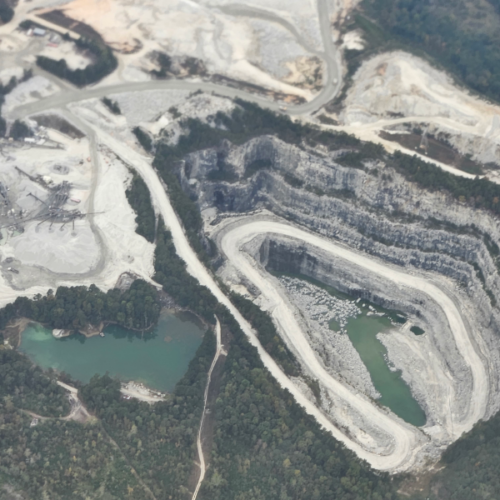
Phosphate mining, a necessity for fertilizer production, has a significant environmental impact. Mines are often located near aquatic ecosystems, leading to widespread contamination and habitat destruction. In areas such as Florida, the act of mining often causes sinkholes in the area to occur along with Red Tide.
Runoff from mining sites introduces harmful chemicals and sediments into water bodies, causing the death of millions of fish, frogs, turtles, and more plus water contamination renders it undrinkable. The frequent removal of vegetation for mining can intensify soil erosion, impacting surrounding landscapes and biodiversity.
Implementing sustainable phosphate mining techniques, such as reducing runoff and erosion through proper land management, helps mitigate environmental damage. Employing efficient filtration systems can also reduce the amount of chemical leakage into nearby waterways and groundwater.
Lithium-Ion Battery Dust Mining
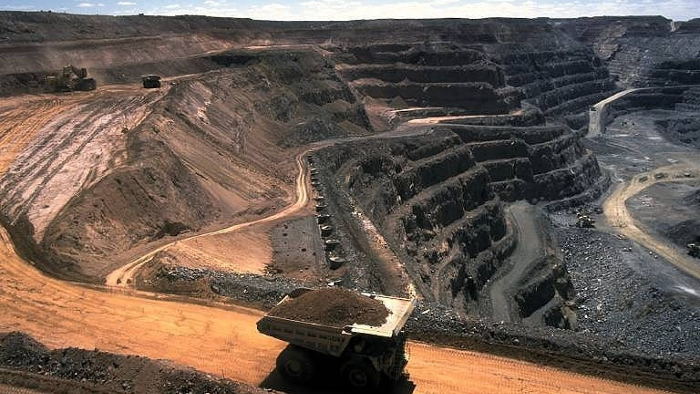
Lithium-ion batteries are essential for various electronic devices but they require specific minerals like lithium, cobalt, and nickel to operate. The mining of these minerals, often in developing countries, raises concerns regarding hazardous working conditions, child labor, and environmental damage.
Also, the disposal and recycling of used and depleted batteries contribute to landfill electronic waste, posing challenges for waste management.
- Lithium Mining Open-Pit Mines: Lithium is extracted from open-pit mines which causes substantial holes in the Earth’s crust. These mines scar landscapes, disrupt ecosystems and alter natural terrains. The world’s largest lithium mine is located in Nevada and measures 45 kilometers long by 35 kilometers wide.
- Cobalt Mining Deep Mining Operations: Cobalt, a critical component in batteries, is often mined in deep underground mines. Once a portal is blown open in the earth, depending on the size, equipment is either lowered and assembled or sent down whole. Then excavation begins to spread underground. These massive excavations result in large subterranean holes, impacting the Earth’s geology and stability. Mining in this format bears a striking resemblance to getting a wound, then getting infected, and the infection spreads to areas around the wound. In these cases, humans keep these portals open and never let the infected wounds to the Earth heal.
- Nickel Extraction Strip Mining and Open-Pits: Nickel is extracted through strip mining and open-pit operations. These methods create incredibly large holes on the Earth’s surface, affecting both land and aquatic environments.
The mining process for all of the needed items such as nickel, cobalt, and lithium introduces harmful chemicals into surrounding soil and water, leading to contamination. This runoff can pollute nearby ecosystems, killing off flora, fauna, and human populations.
Mining activities require the clearing of vast forested areas, causing deforestation and habitat loss. This disruption endangers wildlife, leading to a dramatic biodiversity decline which can often not recover. The damage done is too severe.
Improper disposal and lack of efficient recycling methods lead to the accumulation of electronic waste in landfills. Addressing disposal challenges on a level never before seen and set to increase is crucial for sustainable battery production.
While lithium-ion batteries have revolutionized the way we live, the damage done during the mining process is staggering. Embracing sustainable mining practices, efficient recycling methods, and investing in greener alternatives are essential steps toward mitigating the impact of man-made holes on our planet.
Fracking: Unleashing Environmental Destruction
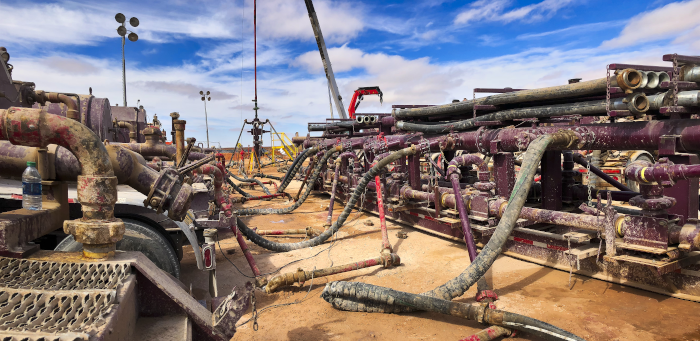
Fracking, short for hydraulic fracturing, is a technique used to extract natural gas and oil from deep underground. While it has revolutionized the energy industry, it comes with significant environmental and health risks. In fact, it has become a hotbed political topic that is frequently debated by political leaders in the United States.
The process of fracking involves injecting high-pressure fluid into the ground to fracture the earth’s deep rock formations with force, releasing the trapped fossil fuels.
Fracking fluids contain chemicals that quickly contaminate groundwater and impact drinking water making it unsafe for nearby communities. Accidental spills and leaks further contribute to water pollution.
The process of fracking releases methane, a potent greenhouse gas, into the atmosphere. Methane leaks during drilling and extraction are major contributors to climate change and air quality issues. Air pollutants emitted during fracking, such as volatile organic compounds, can impact entire communities and cause the residents to experience respiratory problems.
Fracking has been known to induce seismic activity, causing earthquakes. While most induced earthquakes are small, they pose risks to buildings and communities. Also, there is always the potential that a larger quake might be spurred by this unsafe, destructive mining practice.
Deep Sea Mining and Oceanic Despair
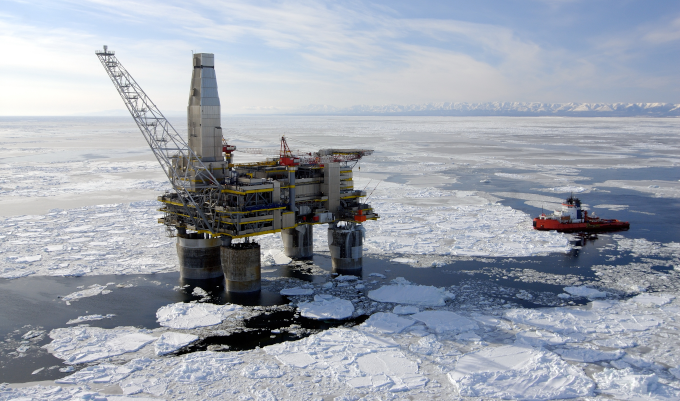
In the depths of our oceans, a new frontier of destruction has emerged – deep-sea mining. These holes blown in the ocean floor, created in the pursuit of rare minerals, jeopardize unique marine ecosystems along with life on the surface. The deep holes further destabilize the fragile balance of the oceans.
The process of deep-sea mining involves the use of remotely operated vehicles (ROVs) equipped with specialized tools and machinery. These ROVs are deployed to the seabed where they collect mineral-rich sediment or extract minerals from hydrothermal vents. To achieve the task, large machines equipped with cutters and suction devices are used to break the mineral deposits free and pump them to the surface through a series of pipes.
One of the significant environmental concerns associated with deep-sea mining is the creation of large holes or depressions on the ocean floor. These depressions occur when the mining equipment removes mineral deposits, leaving behind massive empty voids on the sea floor. These manmade holes can disrupt delicate deep-sea ecosystems, including unique species that have adapted to extreme conditions around hydrothermal vents.
The sediment plumes stirred up during the mining process and the use of heavy equipment can smother marine life and impact organisms in the water column, leading to potential consequences for the entire marine ecosystem. The mining removal of mineral deposits alters the chemical composition of the ocean floor which kills off aquatic life and other organisms.
The Quest of Science - Kola Superdeep Borehole SG-3
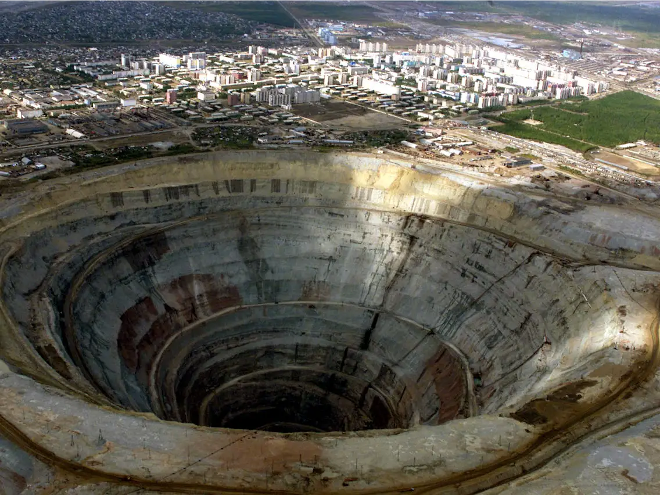
In the Pechengsky District on the Kola Peninsula in the Soviet Union sits the largest artificial hole in the world. It reaches a depth of 40,230 feet in the Earth’s crust and stands as a testament to human scientific ambition and perseverance.
This incredible manmade hole was achieved through a groundbreaking drilling project conducted by the Soviet Union’s government.
The project undertaken was said to scientifically explore mysteries hidden deep within the Earth. Overcoming immense challenges, the scientists and engineers involved dug tirelessly, leading to the creation of the deepest artificial point on Earth. This colossal hole, born out of scientific curiosity, and reckless determination, provides a unique window into the Earth’s geological history.
Known as the “Well to Hell”, the hole reaches a depth of 7.6 miles and would have gone further if not for heat concerns shutting down the operation. Drilling started in 1970 and persisted until 1994 when all operations were halted.
That’s a hole blown 7.6 miles deep into our planet’s very core, the same planet that gives us and sustains life.
Darvaza Gas Crater, Turkmenistan
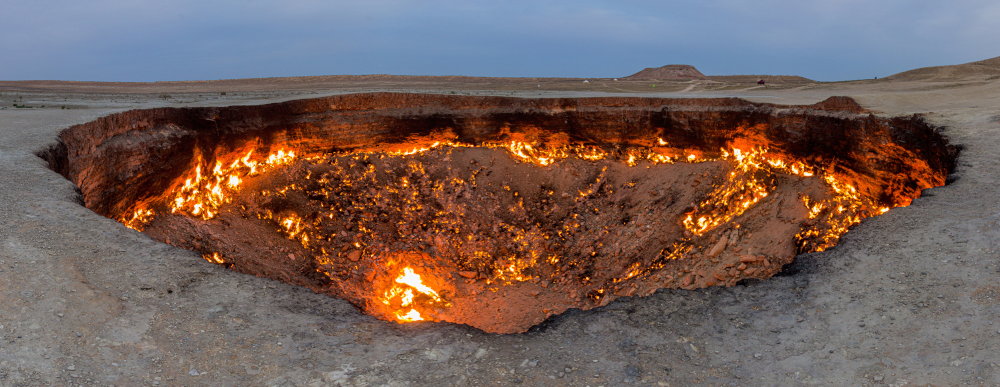
At a depth of 30 meters, the Darvaza Gas Crater was created in the early 1970s in Derweze, Turkmenistan. It was hoped that the hole would be a well of natural gas but during the excavation operations, the hole collapsed into a deep underground cavern and let methane escape.
In an attempt to halt the methane from poisoning humans and animals near the manmade hole, it was decided by authorities that they would light the hole on fire. Once lit they were unable to put out the fire. It has continued to burn for over 50 years now and shows no signs of slowing down.
The area has become a tourist attraction and is often called the “Gates of Hell.’ However, even though it brings in tourism money, the burning hole remains an ecological disaster.
Conclusion
In the wake of these man-made voids, it is imperative to reflect on the legacy we are leaving for future generations. It may be prudent to consider the possibility that there may be no future generations if we continue on this path. The Earth’s scars and open wounds bear witness to our unchecked ambitions. As custodians of this planet, it falls upon us to mend these wounds, rethink our methods, and embrace sustainable practices that nurture rather than deplete. Only through collective awareness and action can we fill these voids with hope, ensuring a harmonious coexistence between humankind and nature.
We as a collective have been able to do things far beyond our small size. The earth was once a much bigger place than it is today, and the holes we’re able to blow in it are much bigger than they used to be. If we the people have grown so big that the planet can no longer defend herself, then it’s up to us to think this through and protect the planet from ourselves.
